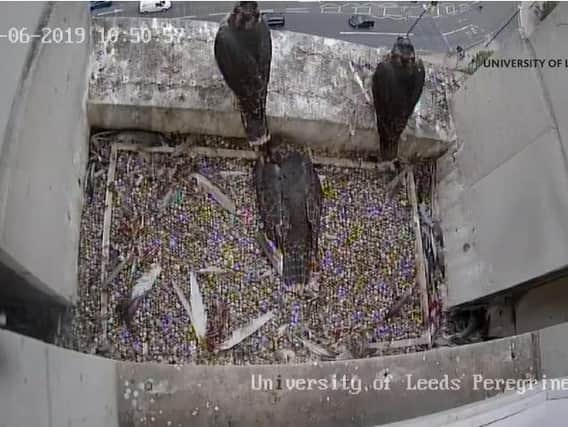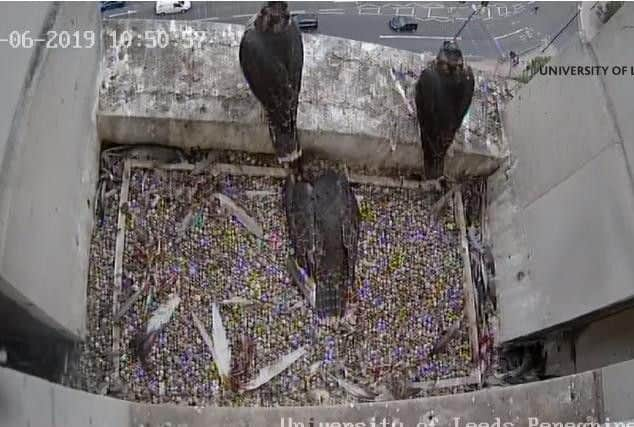Peregrine falcon nesting on University tower takes flight for the first time


Birdwatchers have been tracking the bird - one of a set of four which hatched in April - on a 24-hour live webcam set up at the top of the tower.
The peregrine is a large falcon with long, broad, pointed wings and a relatively short tail.
It is swift and agile in flight, chasing prey.


Advertisement
Hide AdAdvertisement
Hide AdThe birds can be found across Yorkshire, including in York, Wakefield and at Malham Cove.
In Wakefield, viewers can also track the movements of the falcons nesting in the Cathedral on a specially set up webcam.
Four eggs also hatched this morning (June 7th) at Malham Cove.
At around 4.50am this morning, 40 days after hatching, the first bird took to the skies across Leeds from the tower.
Advertisement
Hide AdAdvertisement
Hide AdPaul, a birdwatcher and University of Leeds graduate, said: “We expected the birds to start flying before the 42 day mark so everybody has been stood ready.
“The bird took off in the early hours this morning so I don’t think anyone was here to spot the moment unfortunately.
“A lot of people including students love the birds and have been following the progress on the webcam so this is a huge moment.”
The project is run by the sustainability project at the university.
Advertisement
Hide AdAdvertisement
Hide AdOn Wednesday May 15th, the Yorkshire Wildlife Trust came to campus to ring the chicks.
The details of the weights are:
TCD – 725g
TAD – 675g
TBD – 525g
T7C – 700g
The birds have not been given any names yet other than the tag codes used to identify them.
Crowds often flock around the base of the tower to try and spot the rare falcons on their lunch break, Paul said.
He added: “They are a rare breeding bird with the highest level of protection.
Advertisement
Hide AdAdvertisement
Hide Ad“Students from the University come out to see them and love them.”
Paul said the falcons main food source is feral pigeons around the city.
He added: “The birds are likely to have all gone by Sunday.
“We don’t expect them to return to the nest but they will likely stick around Leeds for the next few weeks.
“They will then go off and wander a long way, last year one of the birds was spotted atop Morley Town Hall.”